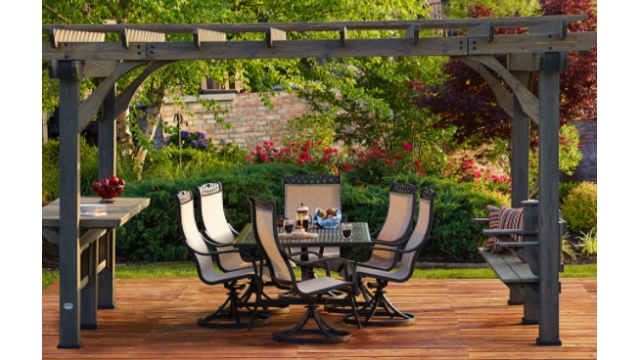Pests can be annoying, but they also cause serious damage to our property and health problems for us and our pets. They can spread diseases like plague, typhus and flea-borne spotted fever through bites.
Pest control strategies focus on prevention, suppression and eradication. Prevention includes preventing pests from entering an area or spreading to unacceptable levels; suppression reduces the numbers of pests to acceptable levels; and eradication destroys all pests. Contact Pest Control Portland Maine now!
Pests like rodents, ants, and mosquitoes aren’t just annoying; they can cause serious problems for your health, safety, and property. In addition to the physical damage they cause, some can also spread diseases, such as hantavirus, leptospirosis, and Salmonella. Pests invade homes looking for food, water, and shelter, which is why it’s so important to keep them out of your home in the first place.
There are many ways to prevent pests from entering your home, including identifying and sealing entry points. Gaps around windows and doors, cracks in the foundation, and openings around pipes and utility lines can all be entry points for pests. Inspect these areas regularly and seal them as needed.
Another way to prevent pests is to keep your yard and home clean. Keep trash bins and compost containers away from your house, and trim back bushes and vegetation so they’re not touching your house or windows. This helps to prevent pests from finding these areas, which they’re attracted to because of the odor and moisture from the rotting waste.
Regularly vacuum and wipe down surfaces, especially carpets and upholstery, to remove eggs and larvae that might be lurking. This will help to keep pests from breeding, which can cause further problems. Be sure to check window screens and replace them if necessary. Window screens are the number one way that pests enter homes, so make sure they’re in good condition and are not torn or missing.
Once a pest has found its way into your home, it can be difficult to get rid of them on your own. It’s essential to find the best pest control solution for your situation. There are three general pest control strategies: prevention, suppression, and eradication. Prevention is the most effective method for controlling pests and preventing them from causing more harm than you’re willing to accept. This includes regularly inspecting and repairing your home to avoid pests in the first place, sealing entry points, and cleaning up any sources of food or water that attract them.
Suppression is a common method used in conjunction with prevention to reduce pest numbers and the amount of harm they’re causing. It involves implementing measures to limit the number of pests in your home, and it may include the use of baits, traps, and sprays.
Seal Off Entry Points
Small cracks and crevices around the outside of your house are common entry points for pests. These can be caused by poor construction, a failing roof, and other factors. It’s important to regularly inspect your property for these areas and to fill in any gaps that are found. Sealing these cracks and crevices will make it harder for ants, spiders, roaches, rodents, and other pests to enter your home.
Doors and Windows
Many people overlook this, but a door or window that doesn’t close properly or has a gap is an easy place for pests to enter. Installing door sweeps and weather stripping can prevent pests from entering through these areas. Vents and utility openings also are commonly used entry points for pests. Make sure that these are tightly sealed, especially those for plumbing, electrical wiring, and HVAC systems. Use caulk or expanding foam to seal these open areas.
Gaps and holes in the foundation of your home are another common area for pests to get inside. Sealing these is an effective preventative measure, and it will also improve your home’s energy efficiency.
Other potential entry points are located higher up in the structure of your home, such as soffits and attic vents. Installing screen covers or using metal wool in these areas can keep rodents and other pests from nesting in these spaces.
The best way to prevent pests from invading your home is through Integrated Pest Management (IPM). Regularly taking out the trash, fixing leaky pipes, and decluttering can reduce attractants that draw pests into living areas. In addition, reducing the amount of food and water left out outdoors will help deter pests.
Sealing off entry points is an essential part of preventing pest infestations. It can be done by you with regular inspections and by hiring a professional to conduct a comprehensive house sealing service. These services will address all the places that pests can access your home, including entry points in the roof, attic, basement, crawl spaces, and spaces where pipes enter walls. These measures will significantly decrease the chances of a pest infestation and enhance the effectiveness of other preventive practices such as traps and treatments.
Clean Up Your Yard
In addition to blocking entry points, cleaning up yard debris also helps to prevent pests from finding hiding places. Pick up sticks, pine cones, pet messes and fallen leaves from your lawn and garden beds and avoid over raking leaves that aren’t yet dry (ground-nesting bees may still be hibernating underneath). Also, don’t plow or till the soil until mid-Spring to give ground-nesting bees a chance to emerge.
Physical pest control involves removing and blocking nests, staking or caging trees, bushes or vines to keep them from climbing up walls, and setting traps in gardens and fields. Some physical pest controls, such as nematodes and beneficial insects, are more sustainable than chemical methods.
Biological pest control relies on natural organisms like predation, herbivory and parasitism to keep unwanted plants and insects under control. The use of bacteria, fungi, viruses, nematodes and phytoplasmas can also help to prevent plant diseases.
Chemical pest controls are powerful tools, but they must be used responsibly – in combination with other methods. The best pesticides are those that can be applied at low doses and are safe for people, pets and the environment. Before applying any chemicals, make sure to read the label thoroughly. Also, be sure that you’re familiar with proper application techniques – for example, by watching training videos or attending workshops if needed.
It’s important to know how to identify a pest and its life cycle before beginning any controls. Accurate identification can help you predict when pests are most vulnerable and determine how much control is required. For example, identifying a mosquito can help you assess whether the mosquito population is high enough to warrant treatment and where in the yard mosquitoes are likely to lay eggs.
Keep Your Trash Out
You’ve probably seen images of wild animals such as bears or raccoons raiding trash cans in parks or apartment complexes. While these scenes are amusing from a distance, the same thing happening on your property can be quite annoying and frustrating.
Keep critters away by putting a little effort into your waste disposal practices. Make sure to compost vegetable scraps, but don’t throw in dairy, citrus or oils or meats (which attract raccoons and bears). If you have an outdoor garbage can that a raccoon could get into, try putting it behind another can or using a chicken wire fence around the can. You can also use a motion-activated light for your garbage cans, especially if they’re on a sidewalk or near the house where nocturnal animals might tamper with them.
Avoid overfilling your garbage cans, which invites pests to climb inside and cause an unsanitary mess. If you have to put in a lot of items, consider using multiple cans rather than just one large one. Also, make sure your trash cans are closed securely; a raccoon can easily open the lid of a can or trash bin with its strong arm.
If your preventative measures don’t work, there are many different chemical and biological treatments for pest control. Some of these chemicals can be very dangerous to people and the environment, so they are used only when necessary. The Integrated Pest Management (IPM) approach emphasizes monitoring and scouting to identify and locate problems, and treating only those areas where the problem is identified.
Biological pest control uses natural enemies of the targeted pest, such as parasites, predators and pathogens. The enemy is bred in the laboratory and then introduced to the site, usually in small, repeated batches or in a single large release. This method typically requires an active management role, because there is often a lag between when the natural enemy becomes established and when the targeted pest population begins to decline.
Some commercial properties depend on the services of professional pest control companies to maintain their facilities and protect their assets. A trained pest control technician can perform inspections to identify potential infestations and develop a customized treatment strategy to eliminate them as quickly and safely as possible.

